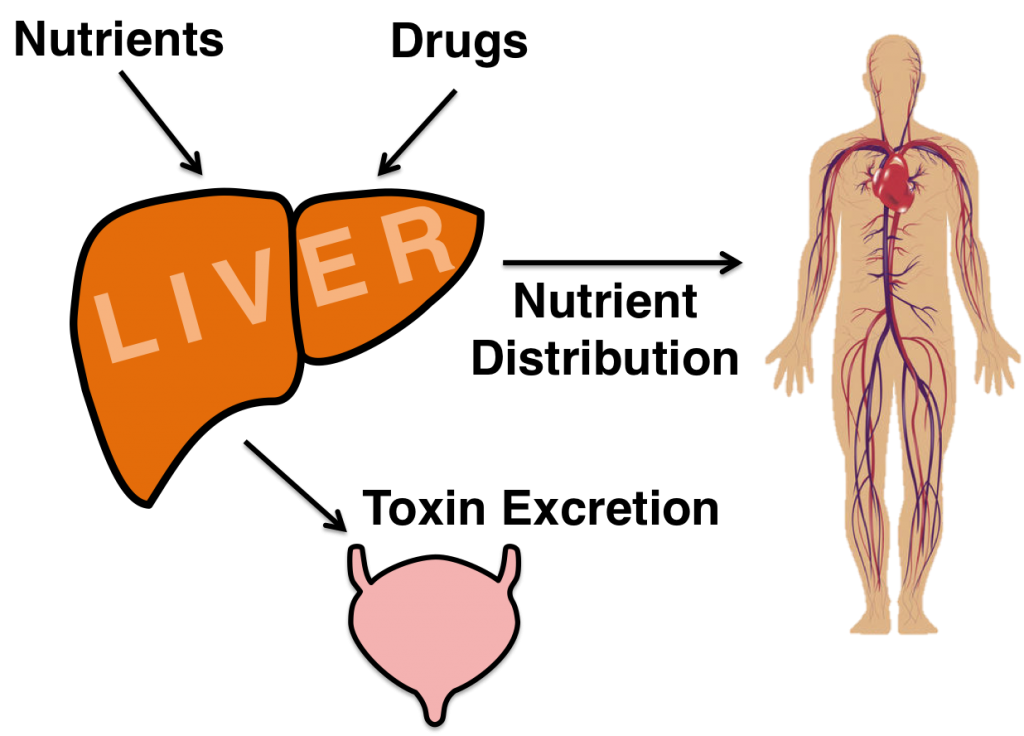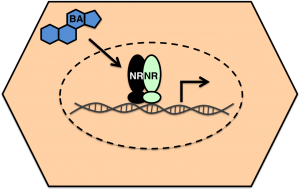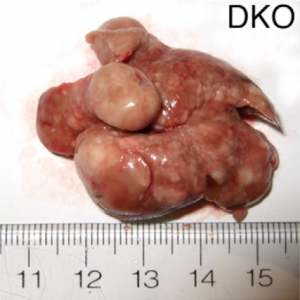The Anakk lab wants to understand liver metabolism: mainly how the liver decides the fate of lipids and carbohydrates.
The liver is a major organ that regulates metabolism of triglycerides, cholesterol, glucose, amino acids, heme, xenobiotics, and many more substances. A family of transcription factors called the “Nuclear Receptors” spearheads these functions. For instance, metabolites of the cholesterol pathway act as ligands for a variety of nuclear receptors and this cross-talk can seamlessly integrate many of the liver functions. Therefore elucidating this interaction is fundamental to comprehend the liver biology.
Understanding these networks will also enable us to grasp how the decisions are made at the molecular level whether to store, catalyze or transform the different metabolites in the liver. Currently we are focusing our efforts to study the biological functions of bile acids, a major metabolite of cholesterol, exclusively synthesized in the liver. Bile acids are detergents that are absolutely necessary for the digestion of dietary fat! Their role as a signaling molecule has recently been discovered. By combining genetics, biochemistry, high throughput technologies, and engineering approaches we are extensively characterizing the bile acid–nuclear receptor axis in health and disease. Our studies have already identified that changes in this axis during liver diseases can lead to distinct and varied effects in diabetes and in cancer.
Nuclear receptor signalling regulates biliary homeostasis
Bile acid concentrations are tightly maintained through a negative feedback mechanisms coordinated chiefly by nuclear receptors, Farnesoid X Receptor (FXR) and Small Heterodimer Partner (SHP). We generated global FXR; SHP double knockout (DKO) mice to understand the consequence of biliary overload. These DKO mice have chronically elevated bile acids and mimic pediatric cholestasis.
We next want to examine the tissue specific role for FXR and SHP. Is the coordinate role of FXR and SHP observed in liver maintained in other tissues as well? How does tissue specific loss of these two receptors affect synthesis, transport and recirculation of bile acids?
Nuclear receptor signaling regulates adipogenesis
Obesity and diabetes have emerged as major epidemics of the 21st century. More than 100 genes have now been identified for their role in regulating body fat. These genes are controlled by multiple signals, including nuclear receptors and bile acids (BAs).
Our findings indicate that elevated BAs protect against obesity. It is fascinating that naive mice on a BA enriched diet as well as DKO mice, which have elevated BAs, exhibit decreased visceral fat without any difference in food intake. We want to understand how BAs and nuclear receptors, especially FXR and SHP, regulate this beneficial effect. Do they burn more fat? Are they more active? Do they have defective adipogenesis?
Bile acids signal to Hippo pathway and cause hepatocellular carcinoma (HCC)
HCC is the fifth most common malignancy and results in 500,000 deaths annually. The underlying molecular events leading to HCC are still being evaluated and no targeted drug therapy currently exists for HCC.
Hippo signaling has been recently identified as a regulator of organ size and as a critical contributing factor to the development of spontaneous HCC. Bile acids are known to promote liver tumors and we recently identified BAs as regulators of hippo pathway. Consistent with this, the DKO mice, which have excess amounts of BAs develop rigorous and spontaneous HCC. We are excited to examine the importance of BA mediated YAP activation in liver tumorigenesis. How do BAs signal to the hippo pathway? Is it direct or mediated via other signaling proteins? Is there any nuclear receptor involved in this process?
Overall, these projects will broaden our understanding of bile acid signaling and nuclear receptor-mediated pathways necessary in the maintenance of energy balance, regulation of hepatic metabolism, and protection from tumorigenesis.



